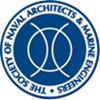海军应用边界层过渡模型:能力和局限性
IF 1
4区 工程技术
Q3 ENGINEERING, CIVIL
引用次数: 6
摘要
我们描述了几个最近开发的边界层过渡模型在爱荷华大学开发的超集计算流体动力学代码REX中的实现,以及对其在海军流体动力学应用中的能力和局限性的评估。基于相关性和放大因子输运的模型在一方程和二方程雷诺平均Navier-Stokes湍流模型中实现,包括在横流中操作的修改。对REX中实现的过渡模型进行了广泛的验证,用于海军相关的几个二维和三维几何形状。具有大量可用实验数据的标准测试包括零压力梯度的平板、翼型和镰刀形机翼。更复杂的测试案例包括螺旋桨P4119,有一些可用的实验数据,以及通用潜水器Joubert BB2,没有可用的相关实验数据,以验证过渡模型。对最后两种情况的模拟表明,对于小型船舶,在实验室和现场规模的机身上可以存在广泛的层流区域,对阻力和推进的潜在影响可能是显著的。在实际的空气动力学和流体动力学应用中,附加的完全湍流的预测进展已经达到了一个相对成熟的平台。然而,根据最近对起搏项目的全面审查(Slotnick等人,2014),在不久的将来将计算流体动力学(CFD)纳入设计过程的最大障碍是能够准确预测具有边界层过渡和分离的湍流。过渡会影响皮肤摩擦、传热、噪音、推进效率和操纵性。在模型规模和无人驾驶或自主水面和水下航行器等小型飞行器中尤其如此。本文章由计算机程序翻译,如有差异,请以英文原文为准。
Boundary Layer Transition Models for Naval Applications: Capabilities and Limitations
We describe the implementation of several recently developed boundary layer transition models into the overset computational fluid dynamics code, REX, developed at the University of Iowa, together with an evaluation of its capabilities and limitations for naval hydrodynamics applications. Models based on correlations and on amplification factor transport were implemented in one- and two-equation Reynolds-averaged Navier-Stokes turbulence models, including modifications to operate in crossflow. Extensive validation of the transition models implemented in REX is performed for several 2- and 3-dimensional geometries of naval relevance. Standard tests with extensive available experimental data include flat plates in zero pressure gradient, an airfoil, and sickle wing. More complex test cases include the propeller, P4119, with some experimental data available, and the generic submersible, Joubert BB2, with no relevant experimental data available, to validate the transition models. Simulations for these last two cases show that extensive regions of laminar flow can be present on the bodies at laboratory scale and field scale for small vessels, and the potential effects on resistance and propulsion can be significant.
Progress for prediction of attached, fully turbulent flows for practical aerodynamic and hydrodynamic applications has reached a relatively mature plateau. However, according to a recent comprehensive review of pacing items (Slotnick et al. 2014), the single largest hurdle for incorporating computational fluid dynamics (CFD) into the design process in the near future is the ability to accurately predict turbulent flows with boundary layer transition and separation. Transition can impact skin friction, heat transfer, noise, propulsion efficiency, and maneuverability. This is especially true at model scale and for small craft such as unmanned or autonomous surface and underwater vehicles.
求助全文
通过发布文献求助,成功后即可免费获取论文全文。
去求助
来源期刊

Journal of Ship Research
工程技术-工程:海洋
CiteScore
2.80
自引率
0.00%
发文量
12
审稿时长
6 months
期刊介绍:
Original and Timely technical papers addressing problems of shipyard techniques and production of merchant and naval ships appear in this quarterly publication. Since its inception, the Journal of Ship Production and Design (formerly the Journal of Ship Production) has been a forum for peer-reviewed, professionally edited papers from academic and industry sources. As such, it has influenced the worldwide development of ship production engineering as a fully qualified professional discipline. The expanded scope seeks papers in additional areas, specifically ship design, including design for production, plus other marine technology topics, such as ship operations, shipping economic, and safety. Each issue contains a well-rounded selection of technical papers relevant to marine professionals.
 求助内容:
求助内容: 应助结果提醒方式:
应助结果提醒方式:


